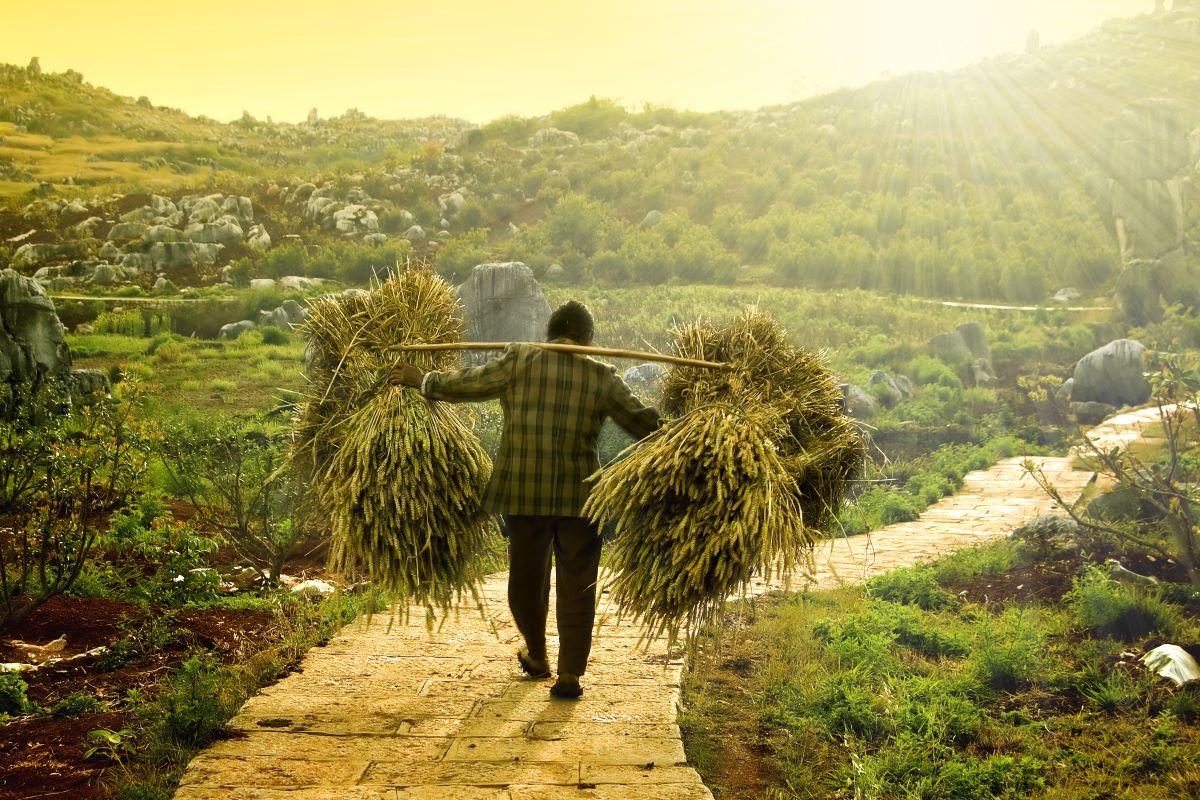Late last month, local governments in China issued warnings that the upcoming harvest was under ‘severe threat’ due to the ongoing drought in the country. Already hit by food inflation, China’s food security is now in a precarious position due to a shortage of water.
This is not the first time China has faced food shortages, the earliest in modern times being some 60 years ago when the Great Chinese Famine hit the country from 1958 to 1962. More recently, China faced food shortages in 2016. The country has 18.47% of the world’s population, but the total arable land in the country has fallen 6% in the past decade to 13% of the total landmass, China’s Ministry of Natural Resources said in 2021.
A growing population, rapid urbanisation and development are likely to reduce the proportion of agricultural land even further. Amid this, various research suggests that climate change has increased the severity and frequency of droughts in China.
“China is one of the most disaster-prone countries in the world. More than 186 million people are exposed to the effects of droughts and floods, which are estimated to reduce the country’s potential grain output by about 20 million tons per year,” says the World Food Programme.
Apart from the impact on agriculture, the drought is causing problems with electricity production. Some factories in China’s Sichuan were shut in August due to a power shortage, which impacted the supply chains of automobiles, electronics, and other goods.
Issues with China food security
While China is trying to become self-sufficient in the majority of business sectors, food security is an aspect that Beijing must rely on imports. The upcoming 20th National People’s Congress in October is likely to prioritise policies for self-sufficiency in food.
The 2021 Global Food Security Index, which measures food affordability, availability, quality and safety, and natural resources and resilience, ranked China 34th out of 113 countries. “The last thing Beijing needs in its bid to become a global superpower is to depend on foreign food supplies,” a Shanghai-based commodity consultant told S&P Global.
China is the world’s biggest importer of soybeans and meat and among the biggest importers of dairy, wine, and other food items. Consumer inflation in China has ticked up as meat imports have become expensive, even as domestic production has picked up.
Pork meat, the most widely eaten meat in China, has become expensive in the past few months, affecting China’s food security. The supply of pigs is low as several farms and companies shut down during the pandemic. Additionally, the bigger issue for hog farms is acquiring feed, whose supply is running low due to the Russian invasion of Ukraine.
The rising food costs are weighing on consumer prices, which rose 2.5% year on year in June. Among the parameters considered for measuring China’s CPI, food items account for up to 35%, whereas other categories make up between 15% to 5% each.
Separately, a report compiled by Gro Intelligence, a US-based agricultural research and data aggregation platform, in a report said that the harsh weather is stressing rice and wheat crops in China.
The hardest hit areas are along the Yangtze River, the longest river in Asia, which plays a major role in irrigation in the country. Some estimates show that the Yangtze Delta generates as much as 20% of China’s GDP.
The worst ever drought in China this year has caused parts of the Yangtze River to dry up. China’s southern rice-producing provinces — Jiangsu, Sichuan, Anhui, Jiangxi, and Hunan, which together account for nearly half of total rice production — have seen green cover drop to the lowest level in more than two decades, as per Gro. The research firm adds that soil moisture levels are at a 12-year low in these regions.
Separately, soil moisture levels in the Henan province, a major producer of wheat, have also fallen to a 12-year low. Data compiled by Gro shows that China’s wheat imports China have hit a record in 2021 and so far in 2022.
How to improve China food security?
Beijing has taken note of the food supply challenges faced by the country, and President Xi Jinping has appealed to citizens to prevent food wastage. The war in Ukraine hit supplies of grain across the world, whereas fuel and fertilizer costs soared. The shortage of key materials for agricultural plantations coupled with the drought has brought a myriad of issues for farmers.
Last year in April, President Xi declared that ‘food security is an important foundation of national security’. China’s new agriculture minister Tang Renjian further emphasized the importance of food security by terming seeds as the ‘computer chips’ of agriculture and cultivated land as the ‘lifeblood’ of food production.
China’s 14th Five Year Plan has included grain security, under which the country must achieve grain production of more than 650 million tons a year. Plans for specific arrangements of food security, improving the grain industry and developing agriculture are also included in the plan.
Beijing has implemented the National High-Standard Farmland Construction Plan, under which a national target of 71.5 million hectares of quality farmland will be developed by 2025 and another 80 million hectares by 2030. Another trend is the ‘Food Silk Road’, under which China is looking to diversify food imports and has signed 100 agricultural cooperation agreements with Belt and Road Initiative countries.
There are several other measures implemented for China’s food security, but the 20th National People’s Congress later in October will provide a clearer picture of Beijing’s next moves in light of the severe drought.










 Australia
Australia China
China India
India Indonesia
Indonesia Japan
Japan Malaysia
Malaysia Philippines
Philippines Singapore
Singapore South Korea
South Korea Taiwan
Taiwan Thailand
Thailand Vietnam
Vietnam
 Germany
Germany Hong Kong
Hong Kong USA
USA Switzerland
Switzerland Singapore
Singapore United Kingdom
United Kingdom








